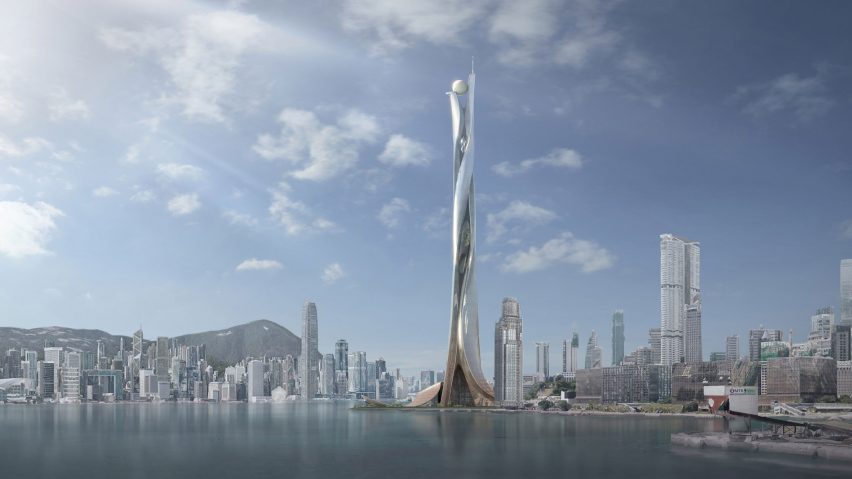
"We were doomed for failure in the eyes of the architectural community" says Skyscraper movie designer
The megatall tower in new action movie Skyscraper was never expected to be a hit with architects, admits production designer Jim Bissell, but he wanted the building to be a "hero" nonetheless.
The task of designing The Pearl – an imaginary 240-storey tower in Hong Kong that catches on fire – fell to Bissell and his team, who were required to create a skyscraper that was both believable and that satisfied all the requirements of the plot.
But the Oscar-nominated production designer said that marrying a beautiful building and the storyline of the movie, which stars actor Dwayne Johnson, was an impossible task.
"No matter what we did, we were doomed for failure in the eyes of the architectural community," Bissell told Dezeen. "I had no delusions about the fact that it was going to incite the ire of many of my architectural peers."
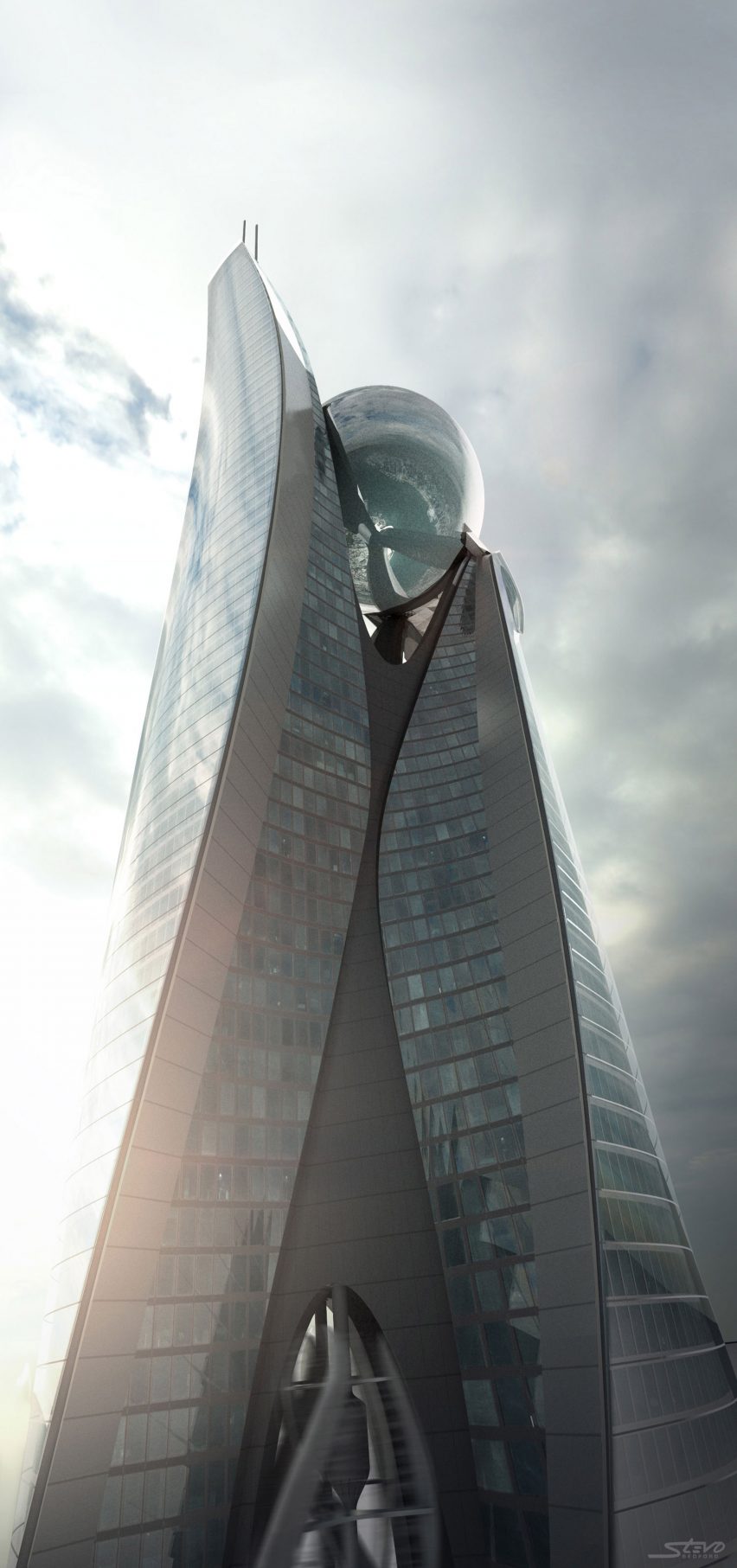
The script called for a colossal skyscraper that Johnson's character could access in a dramatic fashion, in order to put out the fire and save his family trapped inside, as well as provide a vertigo-inducing setting for the action.
"All of the criteria that good architecture needs to meet to be beautiful, wonderful and celebrated, are not the criteria I had before me to design this building," said Bissell. "As a designer who also wants to make the building look appropriate as a piece of architecture, that was a real challenge."
The production designer previously worked on Mission Impossible: Ghost Protocol, which sees Tom Cruise scale the world's current tallest building – Dubai's Burj Khalifa. He was also nominated for an Academy Award for his work on George Clooney's 2005 historical drama Good Night, and Good Luck.

For Skyscraper, which was released last week, The Pearl was designed to reach 1,066 metres in height – making it the world's tallest building if it were real – and is described as "a marvel of modern engineering".
Architect and tall-building specialist Adrian Smith, who consulted on the project during its early writing stages, previously told Dezeen that director Rawson Marshall Thurber wanted a building that was based on real possibilities.
But this proved challenging for several reasons, Bissell revealed. For example, written into the movie's narrative is a domed portion of the building, also called the Pearl, which houses various high-tech functions at its tip.
"The first real challenge was to make a very, very tall building with a pearl at the end, and not make it look phallic," said Bissell. "The second is that, because it is so overbearing on the skyline, it's so prominent... I did want to try to give it some kind of real character."
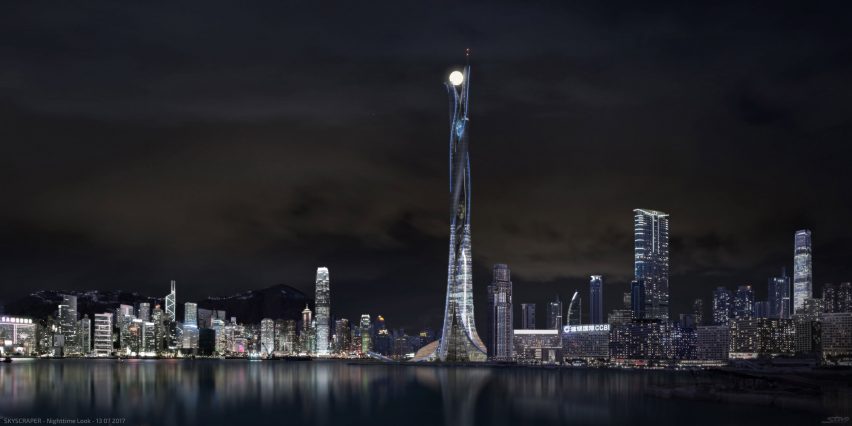
During the design process, the team stumbled upon an ancient Chinese myth, The Dragon's Pearl, which provided a source of inspiration for the concept. Across Asia, the dragon symbolises strength and courage, echoing the character of The Pearl's owner and developer in the movie.
The resulting tower's curving glass form resembles a dragon, snaked at the bottom then reaching skyward, holding the spherical "pearl" in its mouth at the top. The "eye" is created by double-helix wind turbines that help to power the building, while its "belly" is a 30-storey atrium where much of the film's action takes place.
"Something that I think that many architects do in their work, and they've stolen it from us – dramatic designers – is that they give their building a narrative and a context," Bissell said.
Overall, the designer's intention was for The Pearl to be a hero, and "represent something strong and reaffirming, against the forces of greed and corruption".
Skyscraper was produced by Flynn Picture Company, Legendary Pictures, Perfect World Pictures and Seven Bucks Productions. It has been released worldwide by Universal Pictures.
Read on for an edited version of our interview with Jim Bissell:
Dan Howarth: How did you go about designing The Pearl for the movie Skyscraper?
Jim Bissell: By looking at the concept, you can probably see that as a design challenge it was pretty much a no-win situation. As a designer, I'm tasked with the job of designing something that it is totally appropriate for the skyline of Hong Kong.
But all of the criteria that good architecture needs to meet to be beautiful, wonderful and celebrated, are not the criteria I had before me to design this building.
I had to simply make it look like this building was designed by those criteria. It had to appear to be designed by those criteria, but the real criteria was to give Dwayne Johnson access to a building that was on fire, higher than any other building on the skyline.
I'm sure you can appreciate, as any other architect who looks into the design of this building, that no matter what we did, we were doomed for failure in the eyes of the architectural community.
Especially because there were a couple of other things too that were very much the tail end of the dog in terms of the design process.
Dan Howarth: What is the building's role in the story?
Jim Bissell: The storyline involves Dwayne Johnson coming in above the 100th floor which is where this fire has cut off the rest of the building down below, and that's where his family is. And he has to go save his family.
He enters the building in a very dramatic fashion – it's on the posters – then finds his family and constantly has to move up, away from danger and ends up putting himself in even more peril.
That is the design criteria for me, as a dramatic designer. As a designer who also wants to make the building look appropriate, as a piece of architecture, that was a real challenge.
Rawson, the director, had also written in that at the top is this dome-like structure which he called The Pearl, and why the building was called The Pearl in the original script, which houses all sorts of technological marvels, on top of being in a spectacular place – close to 2,700 feet in the air.
To make the building look appropriate, as a piece of architecture, that was a real challenge
The first real challenge was to make a very, very tall building with a pearl at the end, and not make it look phallic. The second is that, because it is so overbearing on the skyline, it's so prominent – and believe me I had no delusions about the fact that it was going to incite the ire of many of my architectural peers – I did want to try to give it some kind of real character.
Unlike The Towering Inferno, or unlike even Die Hard to a degree, but especially Towering Inferno – the building is a character in the sense that its destruction is not due to the architect's negligence or the corruption of a contractor, or something like that. This building is actually really cool, it's a strong character and it's trying to fight and preserve itself, while Dwayne Johnson is trying to fight and save his family.
So the desire on a dramatic level is to make the building a character that you're rooting for.
Dan Howarth: So how did you go about doing that?
Jim Bissell: It was something that I think that many architects do in their work, and they've stolen it from us – dramatic designers – is that they give their building a narrative and a context. The narrative and context that we tried to give our building, The Pearl, were based on cultural icons of the area, as well as myths of the area.
In the preliminary research that we did, we discovered the myth of The Dragon's Pearl, which has to do with the region around the Pearl River, very close to Hong Kong.
In that myth, you begin to see that the pearl is the pearl of wisdom. The dragon is the river itself, snaking through the area. And the dragon has a greater and more transcendent meaning: the dragon that is celebrated in Asian culture as one of strength and courage and fortitude, and resilience.
So this is what we started basing the design on, which was for a self-sustaining building. We wanted to design in artificial rice paddies that were also very decorative, that grew food for the residents. All the energy that was needed to power the building was self-generated through tidal generators, solar panels and the double-helix wind generators that became the eye of the dragon.
The desire on a dramatic level is to make the building a character that you're rooting for
And that the parts were all part of the dragon. Dramatically, we used the singularist forms to try to articulate this strength and elegance as the dragon reaches up out of these rice paddies and holds the pearl of wisdom in the sky. Also, the tail of the dragon scoops and is a cultural centre, where the concert halls are etc.
As this singular form reaches up, right in the centre – which is where our action takes place – is a 30-storey atrium. That's sort of the belly of the beast.
The atrium was very useful for us, because rather than having Dwayne Johnson dangling constantly on the outside the building, in jeopardy, now he was on the inside of the building. And you can see the fire leach around these floors and terraces of the 30-storey atrium.
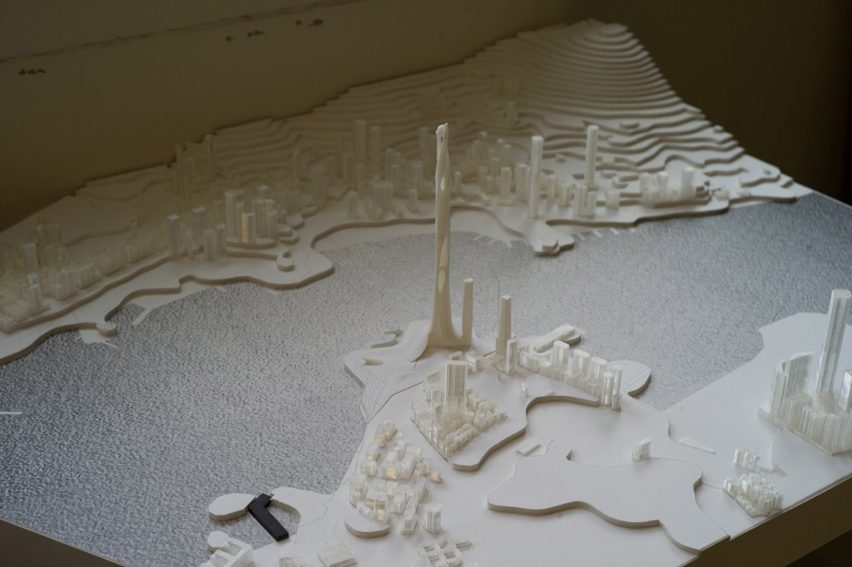
Dan Howarth: The Pearl is branded as the safest building in the world, but obviously that's not the case. What happens to it?
Jim Bissell: There are redundant systems for fire suppression and for safety all through the building, and a very corrupt group who are trying to use the building to hold the owner and the developer of the building – who's one of our heroes – hostage.
Incidentally, another reason for designing the building to have a character of real strength is that it reflects this Chinese character who develops the building. We wanted to make sure the associations are good.
There are all these things that could cause the fire to be contained, but – I don't want to give away too much of the story – they find a way, very deviously, using Dwayne Johnson's character to get into the computer systems of the building and shut those systems down so they don't work.
If you can capture that feeling of vertigo, it's really quite thrilling
It's through the cleverness of both Dwayne Johnson and the building's owner that they're eventually able to put the fire out, and we see in the end that they will rebuild. So the building survives and will be a hero.
Dan Howarth: You mentioned The Towering Inferno, and there have been many other action and thriller movies centred around skyscrapers. What is it about tall buildings that make them such popular subjects for these types of movies?
Jim Bissell: It's height. You get up there and believe me, if you can capture that feeling of vertigo, it's really quite thrilling. It's visceral and you're still sitting in your seat, rather than riding around on a rollercoaster or dropping out of the sky, you're watching somebody else do it. But your neurones are working overtime. It's pretty interesting.
My daughter, who was an assistant in the art department on the movie, went to the cast and crew screening and she was on the edge of her seat the whole time. She'd seen the models, she's seen the sets, she knew what was going on. But she still had sweaty palms and she was having the thrill of a lifetime watching Dwayne leap around
Dan Howarth: So it's about capturing the feeling of unease you might get from being so high up, on screen?
Jim Bissell: I think so yes, it's about creating a bit of a joyride; a vicarious thrill.
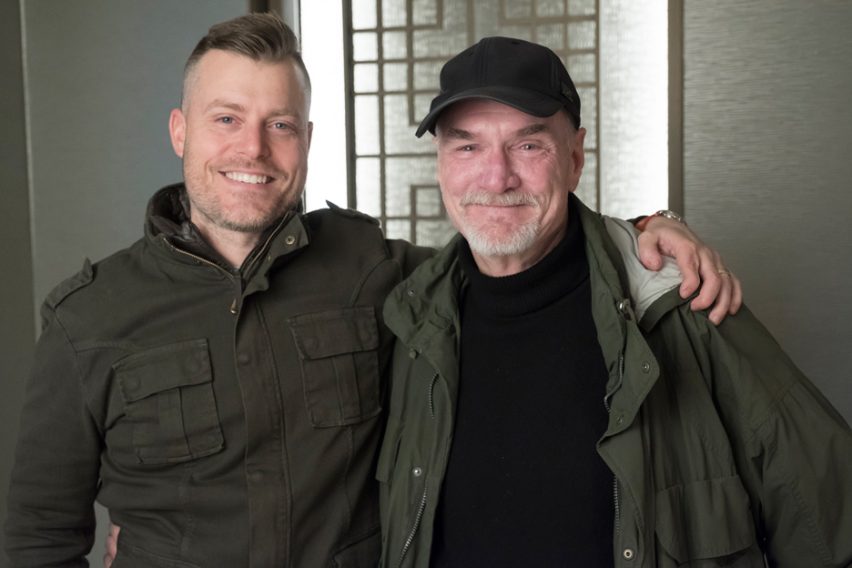
Dan Howarth: It's interesting how buildings can play characters in these movies. The building itself plays a character and a very pivotal one at that. The way it's designed and shaped, it can either be a good guy or a bad guy.
Jim Bissell: It's true. I had this discussion with a journalist about an article she had done about why the villain always resides in contemporary or modern architecture. It's interesting how certain types of architecture represent certain characters.
Dan Howarth: Was the building based on any particular existing structures or architectural style?
Jim Bissell: We were influenced by [Santiago] Calatrava, Zaha Hadid – you could look at that building and see that it has a lot of contemporary architectural influence.
But at the same time, it was solidly based on trying to capture, in an elegant way, the character of this dragon. That was our solution to making it a character, and avoiding the obvious footfall of making it extraordinarily phallic. Those wonderful sinuous form make it more feminine I think.